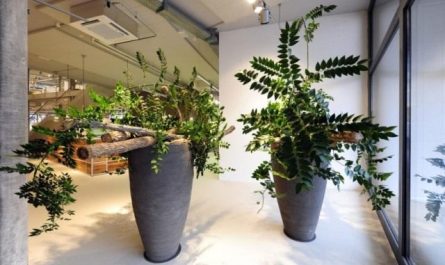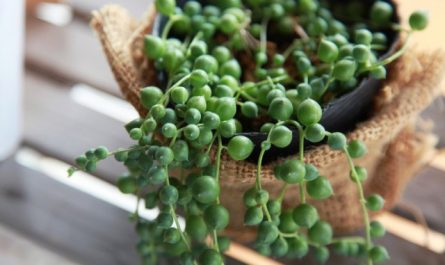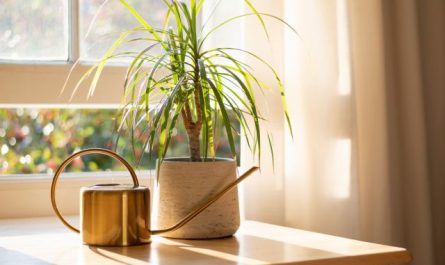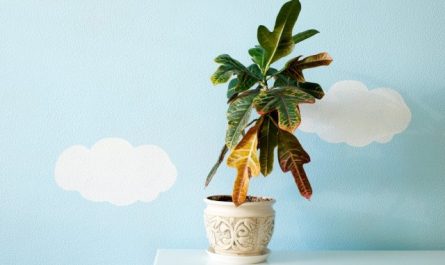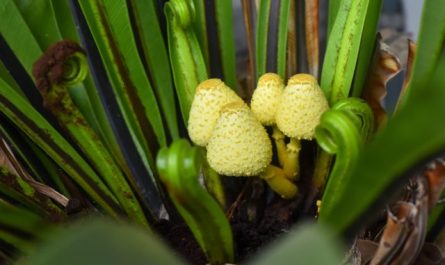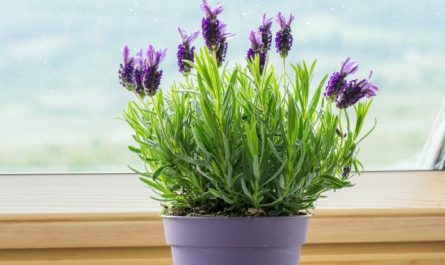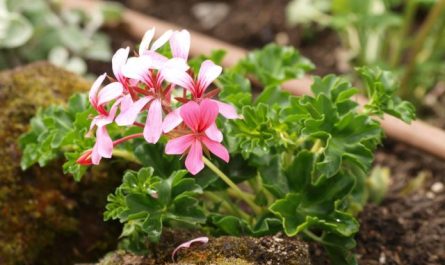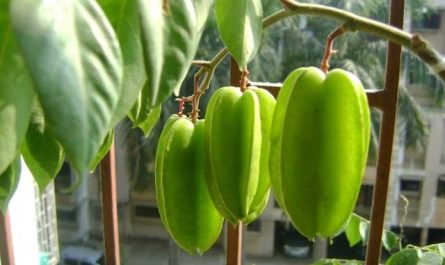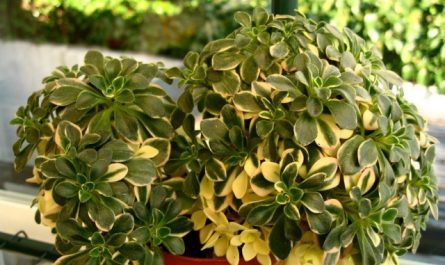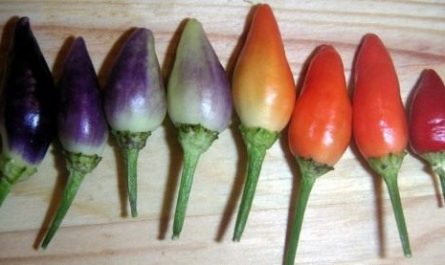Codonanta is a unique “air” plant from among ampelous crops, suitable for growing both in hanging baskets and in regular pots. A graceful beauty with thin shoots, creating an airy, translucent crown with small leaves, is rightfully considered both a decorative foliage and a beautifully flowering plant. And it is far from easy to decide what is most attractive in codonanta. But what is definitely undeniable is the unpretentiousness of the plant, which is very easy to grow.

Columnea’s Luxurious Competitor
For some reason, we often confuse codonanta with columnea, although the plants have practically nothing in common except for their growth form and family. These plants have completely different characters: columnea has a bold and modern character, while codonanta has a noble and classical character. And it is precisely the emphasis on elegance, airy grace and a calm disposition that makes gardeners increasingly pay attention to this amazing plant. We have codonanta (Codonanthe) is sometimes called codonante or codonante, but the confusion in the names of this representative of the Gesneriaceae does not change the essence.
All codonants are beautiful ampelous epiphytes-shrubs. Their thin, drooping, wire-like shoots create graceful cascades and fountains, and leathery glossy leaves with a dense, fleshy texture and dark color are somewhat reminiscent of hoya and emphasize the thin shoots with their elegance and pointed tips. The leaves sit on the shoots in pairs, but not densely: the internodes are almost equal to the length of the leaves.
From June to September, small flowers bloom on the shoots of the codonant, no less graceful than the whole plant. They open in the axils of the leaves, bell-shaped, with a long tube, seem waxy, very graceful. And due to the fact that the flowers are located evenly along the entire length of the shoots, the whole bush seems airy, weightless and lacy. A light spicy aroma, which is quite strong in some species, adds charm to the liana. And if the plant is properly cared for, then red-orange fruits and berries form after the flowers. Among the codonant, there are plants with white or pink flowers.
Codonants are attractive literally throughout the year. Both the flowering and the gradual change of bells to berries, and even the shoots during the dormant period look equally beautiful in any interior.

There are 5 types of codonanta grown in indoor culture, which are generally similar to each other:
- У codonants of thick-leaved (Codonanthus crassifolius, also known as dense-leaved) the generic name at first glance seems like a joke, because its foliage is quite small, graceful and by no means massive. The shoots of the plant are thin, almost straight, droop beautifully, falling apart in a kind of cascade or fountain. The branches reach half a meter in length. The leaves are leathery, up to 5 cm in length, with a pointed tip. Small tubular flowers with a curved spur at the base and an arcuately curving tube are decorated with white color, but there are also pink varieties of this species;
- Codonanta elegans (Codonanthe gracilis) captivates with its white flowers with beautiful specks in the throat, which seem especially elegant against the background of juicy, dark leaves pointed at both ends;
- Codonanta Devos (Codonanthe devosiana) – one of the most fragrant indoor vines;
- Codonanta carnassialis (Codonanthe carnosa) is also considered an aromatic species, its appearance is in many ways similar to Codonanta worthy;
- Small-leaved codonant swollen (Codonanthe ventricosa) is distinguished by small white bell-shaped flowers and three-centimeter leaves. Currently, it is united into the species Codonanta elegans.



In addition to the codonanthus itself, hybrids of codonanthus and nemanthus can be found on sale under this name – codonanthus (codonatanthus), whose flowers are painted in bright colors, but the whole plant is as graceful as the codonants themselves.
Despite the fact that codonants look great all year round and bloom profusely, they are not at all difficult to grow. This liana is suitable even for beginner gardeners. It is undemanding to care and adapts well to new conditions. The dormant period in the development of the plant is not expressed, the conditions of maintenance and care should practically not change.
Lighting for codonanta
The luxurious ampelous beauty will pleasantly surprise you with its undemanding nature to lighting. Kodonanta does not tolerate direct sunlight and strong shading, but any location with light partial shade or light, diffused lighting will suit it equally. Kodonanta feel great with artificial supplementary lighting, as well as with completely artificial lighting, which only expands the range of their use in interiors.
Make sure that the sun-dependent codonanta develops evenly. Regularly turn the container with the plant, not allowing the shoots to stretch in one direction.

Comfortable temperature conditions
Also, codonanta is more than undemanding to air temperatures. More precisely, it does not make any atypical demands. This culture loves stable heat that does not change throughout the year. Normal room temperatures in the range from 18 to 23 degrees Celsius are suitable for this beauty. The minimum permissible value for the air temperature in the room where codonanta grows is 15 degrees in winter. But it is better if the temperature remains stable throughout literally the entire year.
In summer, codonanta can be taken out onto balconies or terraces, or even used in potted groups in the garden. However, in the open air, the plant will need protection not only from direct sunlight (and it is better to stop at partial shade), but also from drafts and precipitation.
Watering and air humidity for codonanta
Watering the kodonanta will not cause any trouble. The plant likes medium substrate humidity without extreme drought or over-watering, which is easy to maintain with regular procedures. The frequency should be quite moderate, adjusted depending on the rate of substrate drying (the next procedure can be carried out only after the top 3-5 cm of soil has dried). If you miss watering, allow the soil lump to dry out completely, then the kodonanta will be able to recover after the first procedure. But such stressful “surprises” should not be arranged often. In winter, watering for the kodonanta is carried out without a significant reduction, just continuing to focus on the rate of substrate drying.
For codonanta, you need to use soft water. It is also better to monitor its temperature: the plant prefers watering with water at room temperature.
Codonanta is not sensitive to air humidity, but its increase has a positive effect on the appearance of the plant and the abundance of flowering. For codonanta, it is enough to carry out periodic spraying. This crop does not need humidifiers.

Feeding for codonanta
Codonants like fairly frequent fertilizing. They are carried out every 2 weeks, using universal fertilizers of complex composition in a standard dosage. Many gardeners for codonants carry out fertilizing literally throughout the year with the same frequency, but it is better to arrange a traditional winter correction. Fertilizing for the winter period is completely stopped, refusing to use fertilizers from November to February. If the plant seems depressed, then in the middle of the dormant period you can carry out one fertilizing with a threefold reduced dose of fertilizers.
Trimming of codonant
Like all vines, codonanta becomes even more spectacular with regular shaping. It comes down to just pinching off the protruding, elongated branches. If desired, codonanta can be trimmed, given greater density and compact dimensions, “curled” on figured supports.
Transplantation, containers and substrate
The transplantation of codonanta is carried out when the plant completely fills the previous substrate with roots. Usually the plant is transplanted once every 1 years, in February-March. It is better to focus on the timing of the activity of the culture itself, transplantation is carried out only when signs of the beginning of growth appear. When transplanting, a high drainage layer is placed on the bottom of the containers, occupying up to 2/1 of the height.
Not all pots are suitable for codonanta. It is often planted in tall containers and vases “on legs”, in which it will form beautiful green waterfalls. It is also good in hanging baskets. When choosing, it is better to take into account the features of the plant’s root system. Codonanta has a compact, superficial root system, and it needs small containers. Even adult codonanta (from 4-5 years) prefer pots with a diameter of only 12 cm.
For codonanta, the parameters of water and air permeability of the substrate are very important. For these vines, light, loose soil mixtures are chosen. Ready-made substrates for violets or any light soil mixtures with the addition of vermiculite and perlite are perfect for codonanta.
Diseases and pests of codonants
This is not only a hardy, but also a very resistant houseplant. Of the typical indoor plant pests, only aphids threaten codonante.

Reproduction of codonanta
For an elegant indoor liana, it is better to choose vegetative propagation methods:
- Division of adult bushes, which is carried out during transplantation, carefully separating 2-5 shoots from the main clump together with a section of the rhizome and planting them as a young plant in a new container. Before rooting, plants need vigilant, careful care, warmth and brighter lighting;
- Cuttings: stem cuttings can be cut from the shoots of the codonantha, cutting out non-lignified sections about 10 cm long with several pairs of leaves. After removing the lower leaves and shortening the upper ones, the cuttings can be rooted in water or in a substrate under a cap, and in a month the plant will begin to develop. The codonantha obtained from cuttings are not planted individually, but up to 3 plants in one pot.
New plants can also be obtained from seeds that are sown in a high-quality substrate under film or glass. As the plants grow, they need to be transplanted into containers of 2-3 plants, gradually growing them and providing the young crops with regular care.

